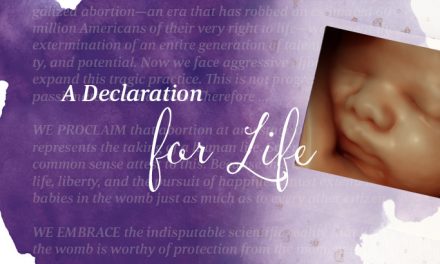For the last several months, Republican members of the House have asked for unanimous consent to bring H.R. 962 to the floor. This bill would protect babies born alive after botched abortions. The request has been made 80 times, but been denied every time by Democratic House leadership, who argue that the bill is unnecessary in part because some believe that babies aren’t born alive after an abortion attempt.
“This bill is a solution in search of a problem,” said Rep. Judy Chu, D-Calif. “It’s unnecessary, redundant, and part of a broader attack on women’s health and reproductive health from the chamber and the Trump Administration.”
Her assertion is wrong on all counts.
Earlier this week, a report came out stating that since 2016 there were 40 cases of babies born alive after failed abortion attempts in three states: Minnesota, Florida and Arizona.
In the case of Minnesota, one child had a severe disability and was deemed “incompatible with life” and no life-saving measures were taken. In another case, the infant was considered “previable,” which is an arbitrary designation since the point of viability is always changing, and the third was given only comfort care. The details about the cases in the other states is less clear. Florida had six babies in 2018 and Arizona had 10 babies in 2017 who were born alive, but the details of those situations were not provided. According to reports, none of the babies survived.
These are also just the cases we know about. There could be many more since it isn’t mandatory for states to report on the number of failed abortions.
It would not be surprising to learn that the number of babies who survived abortion attempts is much higher, especially in a state like Colorado where abortionist Warren Hern completes abortions up until birth. His fortress-like clinic, complete with numerous security cameras and a high fence, would make it easy to fudge or even avoid reporting such cases. The same could be said for any abortion clinic as many have stringent security procedures.
The reality is that many of these babies could have survived, if given the chance. In the case of the preborn baby considered “previable,” it’s possible that a proper medical intervention could’ve made a difference. After all, a child was born at 21 weeks 5 days gestation and survived, but that was only because the physician told her mother that he was willing to try if she wanted. She said yes, and her daughter is alive today because of that decision.
A child born in an abortion facility isn’t as fortunate. Generally, abortion facilities and abortionists are not known for their quality of care. If there was an instance where a mother did want to help save her child after a failed abortion, she would likely have to call an ambulance to take the baby to a hospital. Abortion facilities exist for only one reason, to perform abortions. More complex medical situations almost always require the intervention of emergency medical services.
Given this reality, it is shocking that Congress has still failed to protect babies born alive after a failed abortion attempt. Unfortunately, it would be fairly easy for an abortionist to allow a child born alive after a botched abortion to die of exposure. The Governor of Virginia, Ralph Northam, alluded to the practice earlier this year when discussing a child born with a disability.
Babies born alive after an abortion deserve all the protections that the government has to offer. As Congress reconvenes in a couple of weeks, hopefully a resolution will finally come.






